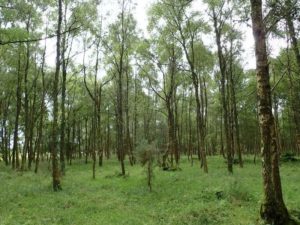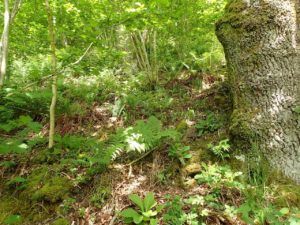
Since October 2019, Botanæco has been pleased to be a partner in the Queen’s University Belfast & Aberdeen Doctoral Research and Training (QUADRAT) programme. Funded by NERC, the programme’s intention is to “bring together research and teaching centres of excellence … from the University of Aberdeen and Queen’s University Belfast and a broad network of collaborative partners to provide a transformative platform for PhD research and training”.
Botanæco’s involvement is with fellow palaeoecologists (‘ecological historians’) Dr Ed Schofield of Aberdeen University & Dr Gill Plunkett of Queens University Belfast in the supervision of our promising student, Annabel Everard. Annabel also spends around one month per year with Botanæco to gain experience of consultancy.
The PhD is looking at the ecological history of sub-canopy woodland layers or what Kate Holl of SNH calls ‘the filling’. This is missing from many of our woodlands which have the very simple structure instead of a single, mature canopy over a lawn of grasses. In only a few places, an impenetrable tangle of mosses, herbs, shrubs, trees & fallen timber persists.

Factors controlling the sub-canopy layers over the past few thousand years are therefore being investigated from small, waterlogged basins within the study woodlands. These basins sequentially accumulate pollen and other identifiable plant remains (seeds, etc.) to literally record the history of the woodland. Their small size and location beneath a tree canopy mean that a very local history is recorded. Pollen analysis, larger plant remains and carbon & lead dating are being used to reconstruct the history from sequential layers.
It is anticipated that the research will be applied to woodland restoration & creation schemes. These often focus on trees alone although some foresters, notably Rick Worrell, are already developing techniques to reintroduce common woodland herbs. Even a small number of these can enrich the often dreary ‘neutral grassland’ that develops under newly-planted trees.
The first samples are in and we’ll be sure to provide updates …
Blog post courtesy of CASE partner Botanæco.
For more posts like this please visit the Botanæco Blog.






















































